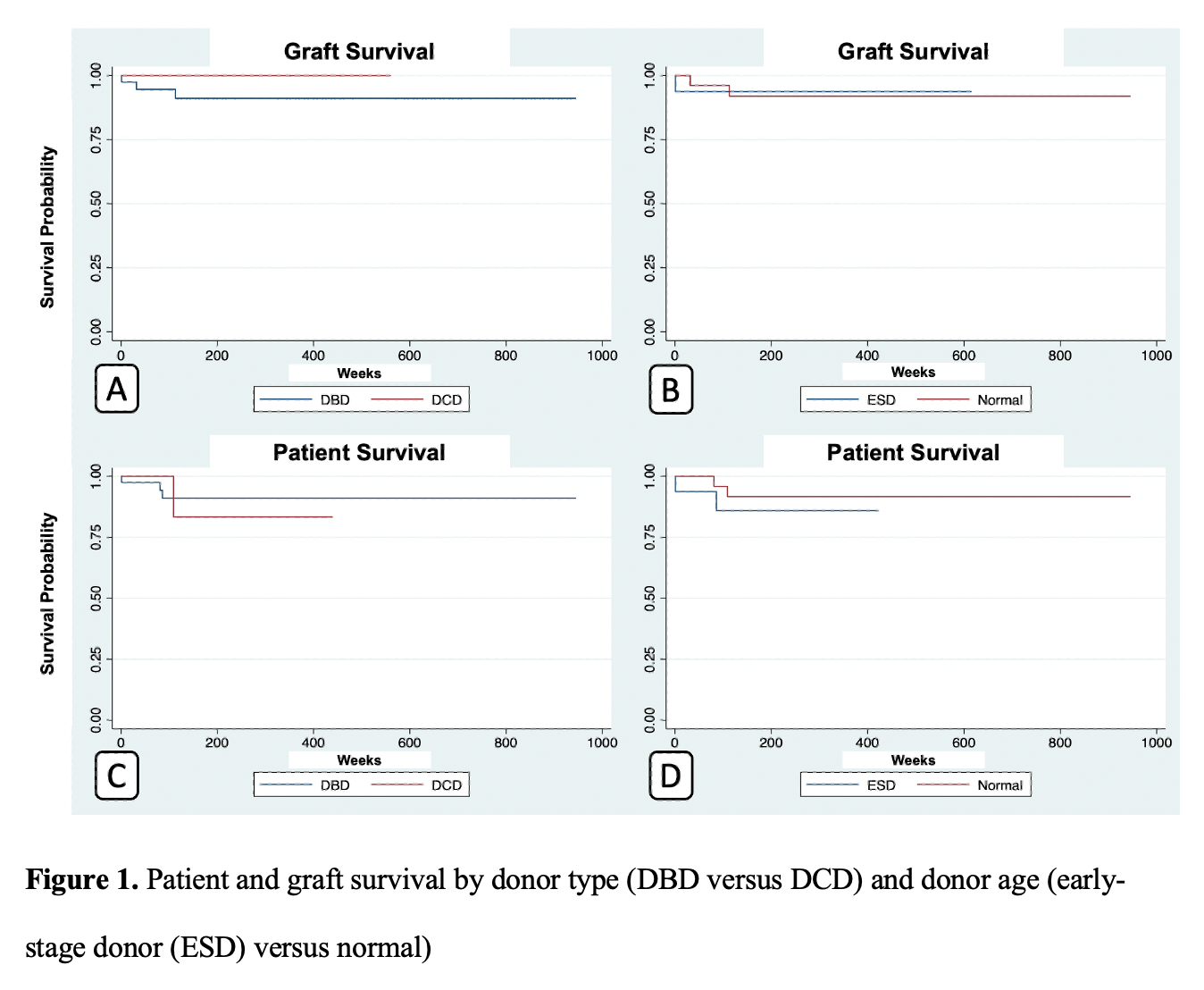Long Term Analysis of Pediatric En-Bloc Kidney Transplantation: A Single Center Experience
1University of Missouri-Kansas City School of Medicine, Kansas City, MO, 2University of Illinois at Chicago, Chicago, IL
Meeting: 2022 American Transplant Congress
Abstract number: 747
Keywords: Graft survival, Kidney transplantation, Pediatric, Post-operative complications
Topic: Clinical Science » Kidney » 32 - Kidney Deceased Donor Selection
Session Information
Session Name: Kidney Deceased Donor Selection
Session Type: Poster Abstract
Date: Saturday, June 4, 2022
Session Time: 5:30pm-7:00pm
 Presentation Time: 5:30pm-7:00pm
Presentation Time: 5:30pm-7:00pm
Location: Hynes Halls C & D
*Purpose: Pediatric en-bloc kidney transplantations for adult recipients are uncommonly performed due to unique donor characteristics, the technical challenge of the operation, and potential surgical complications.
*Methods: All pediatric en-bloc transplants from a single academic, urban center performed between October 2003 and July 2021 from donors 1-62 months were included in the retrospective analysis. Demographic and outcome data for each allograft was collected and a subanalysis was performed according to a GFR threshold of 70 at 1-year post-transplant. A further subanalysis was used to determine outcome results of extra small (less than 20 months old) and DCD donors.
*Results: Of the forty-eight en-bloc kidney transplants performed, the mean donor age and weight were 9.07 ± 11.47 months and 12.41 ± 16.63 kg. Excellent long-term outcomes were achieved, with a 93.6% death censored graft survival and 91.5% patient survival rate at a median follow-up of 81 months (0.06 minimum to 113 maximum). Seven (14.9%) venous thrombosis and one (2.1%) arterial thrombosis were registered with a median follow-up of 6 months, where one led to graft loss. A total of two (4.3%) humoral rejections and four (8.5%) cellular rejections were detected with a median follow-up of 59 months. Within the additional subanalysis, DCD and extra-small donors presented comparable outcome results in terms of long-term survival (only one (6.3%) cellular rejection with an extra-small donor) and perioperative complications (urinary leak, thrombosis, etc.). The donor-recipient weight discrepancy (Δ weight) was analyzed and it was not associated with long-term graft survival. The average GFR value 1-year post-transplant for DCD and extra-small donors was 91.22 ± 30.09 and 80.45 ± 22.63, respectively.
*Conclusions: En-bloc kidney transplants offer excellent short- and long-term outcomes with minimal complication and optimal graft and patient survival. The subanalysis of extra-small and DCD donors show similar outcomes and we have not found any recipient-donor weight/BMI relationships that would present a contradiction.
To cite this abstract in AMA style:
Patel HH, Cocco PDi, Almario J, Fratti A, Akshelyan S, Benedetti E, Tzvetanov I, Spaggiari M. Long Term Analysis of Pediatric En-Bloc Kidney Transplantation: A Single Center Experience [abstract]. Am J Transplant. 2022; 22 (suppl 3). https://atcmeetingabstracts.com/abstract/long-term-analysis-of-pediatric-en-bloc-kidney-transplantation-a-single-center-experience/. Accessed December 17, 2025.« Back to 2022 American Transplant Congress

